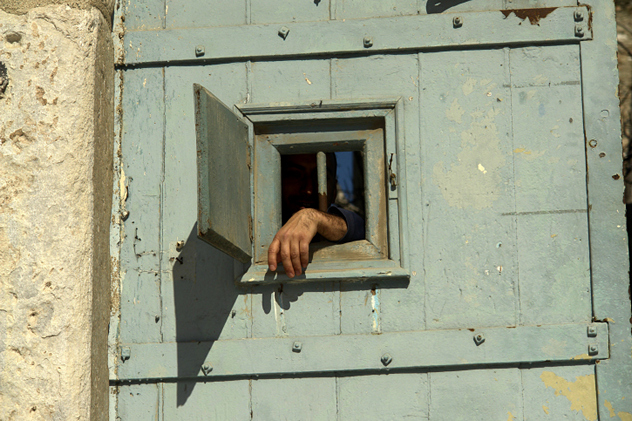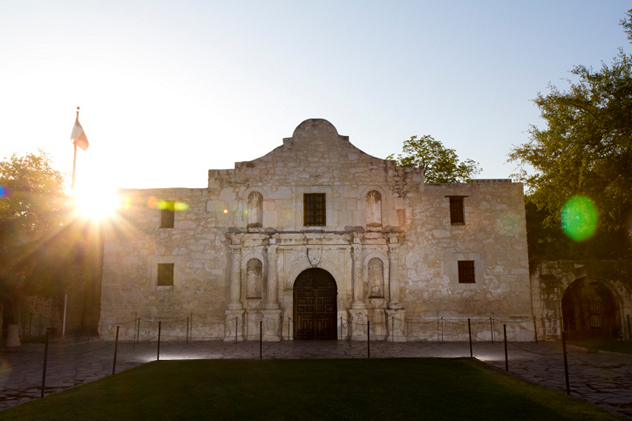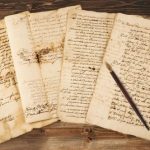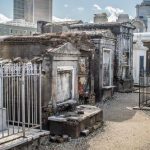 Creepy
Creepy  Creepy
Creepy  Technology
Technology 10 Scientific Breakthroughs of 2025 That’ll Change Everything
 Our World
Our World 10 Ways Icelandic Culture Makes Other Countries Look Boring
 Misconceptions
Misconceptions 10 Common Misconceptions About the Victorian Era
 Mysteries
Mysteries 10 Strange Unexplained Mysteries of 2025
 Miscellaneous
Miscellaneous 10 of History’s Most Bell-Ringing Finishing Moves
 History
History 10 Great Escapes That Ended Right Back in Captivity
 Weird Stuff
Weird Stuff 10 Fascinating Things You Might Not Know About Spiders
 Food
Food 10 Everyday Foods You Didn’t Know Were Invented by the U.S. Military
 History
History 10 Odd Things Colonial Americans Kept at Home
 Creepy
Creepy 10 More Representations of Death from Myth, Legend, and Folktale
 Technology
Technology 10 Scientific Breakthroughs of 2025 That’ll Change Everything
 Our World
Our World 10 Ways Icelandic Culture Makes Other Countries Look Boring
Who's Behind Listverse?

Jamie Frater
Head Editor
Jamie founded Listverse due to an insatiable desire to share fascinating, obscure, and bizarre facts. He has been a guest speaker on numerous national radio and television stations and is a five time published author.
More About Us Misconceptions
Misconceptions 10 Common Misconceptions About the Victorian Era
 Mysteries
Mysteries 10 Strange Unexplained Mysteries of 2025
 Miscellaneous
Miscellaneous 10 of History’s Most Bell-Ringing Finishing Moves
 History
History 10 Great Escapes That Ended Right Back in Captivity
 Weird Stuff
Weird Stuff 10 Fascinating Things You Might Not Know About Spiders
 Food
Food 10 Everyday Foods You Didn’t Know Were Invented by the U.S. Military
 History
History 10 Odd Things Colonial Americans Kept at Home
10 Fascinating Stories Behind Historical Open Letters
The reputation of the open letter has taken a bit of a battering in recent years. Pop singers use them to lecture other pop singers on their state of dress, and celebrity chefs to appeal to their mother-in-law. Yet there was a time that an open letter could be a catalyst for social change. People wrote letters that landed them in prison, or worse. Here are some open letters from history whose stories put today’s offerings to considerable shame.
10J’Accuse
Emile Zola

On January 13, 1898, the front page of the French newspaper L’Aurore contained a headline that became among the most famous in history. The headline was “J’accuse,” and it sat above an open letter penned by Emile Zola—one of France’s top writers. The letter was intended to bring attention to the imprisonment of Alfred Dreyfus, a French army officer that had been locked up for a crime he didn’t commit. The army had discovered their mistake and covered it up, but Zola wasn’t going to let them get away with it.
The letter was in French, but translated versions are available. Zola’s initial politeness seems almost over the top: “Would you allow me, grateful as I am for the kind reception you once extended to me, to show my concern about maintaining your well-deserved prestige and to point out that your star which, until now, has shone so brightly, risks being dimmed by the most shameful and indelible of stains?” More compliments followed, but the rest of the letter undid them quickly and relentlessly.
Zola’s letter sparked a battle between intellectuals and the establishment. The military sued Zola for libel, and the writer was sentenced to a year in prison. He left the country to avoid this. The letter had its intended result eventually. Dreyfus was freed in 1906 with full exoneration, and went on to receive France’s highest military award: the Legion of Honor. Unfortunately, Zola had died in 1902, while Dreyfus was still in jail.
9To The People Of Texas . . .
William B. Travis

The Alamo is one of the most iconic battles in America’s history. In February 1836, the American garrison stationed at the Alamo was under siege by Mexican troops. The garrison’s commander, William B. Travis, penned an impassioned plea for help on the 24th of that month. It is only just over 200 words, from its opening line “To the People of Texas & All Americans in the World” to the triple-underlined “victory or death.”
Unfortunately for Travis, his letter was in vain, and he was dead in less than two weeks. The letter, however, survives even now. In February 2013, it was returned to the place of its creation, escorted by a guard of honor to be displayed for a few days. It’s a far cry from when it left, carried away under cover of darkness on horseback. The letter (and the unyielding patriotism it represents) is so important to the people of Texas that it was housed under bulletproof glass. Guards with metal detectors scanned everyone, before allowing them into the exhibit. Their ancestors couldn’t save Travis himself, but today’s Texans are determined his words will last forever.
8A Soldier’s Declaration
Siegfried Sassoon

Siegfried Sassoon’s open letter, published in the UK newspaper The Times, is in many ways the opposite of Travis’s. It was 1917, and Sassoon had recently returned home, having fought in the trenches since 1915. He was a skilled and courageous soldier, with a hero’s reputation. He was also a popular poet. Sassoon had entered the First World War with as much patriotic fervor as Travis had shown in the Alamo, and as much desire to fight. Yet even the most dedicated soldier can become dispirited watching friends live and die in hellish conditions for two years.
In July 1917, Sassoon was called back into service, but he had utterly lost faith in the cause. With the encouragement of Bertrand Russell, the young soldier wrote his letter, which began “I am making this statement as an act of wilful defiance of military authority because I believe that the war is being deliberately prolonged by those who have the power to end it.” Since the penalty for desertion was death by firing squad, it was a gutsy move.
The language was powerful, with lines such as “I can no longer be a party to prolonging these sufferings for ends which I believe to be evil and unjust.” The letter inevitably caused a stir and was even read in the House of Commons. Sassoon’s reputation was probably his savior—he was declared to be suffering from shellshock and spared a court martial. He was sent to a hospital in Scotland, and basically told to keep quiet or it’d be a mental asylum next.
Sassoon and Davis’ letters have much in common. Yes, one was a refusal to fight, the other a proclamation to fight to the death. In each case, however, the writer was making a stand for what they believed in. Both men stood up when death was a potential consequence. Beneath their differing messages, each is an example of admirable bravery.
7Yorkshire Slavery
Richard Oastler

Slave trade was banned in 1807, and abolitionists continued to fight until it was made illegal altogether in 1833. One man that approved of this progress was Richard Oastler, a land steward from the English county of Yorkshire. Yet there was another issue tied to slavery that he felt was getting too little attention.
On September 29, 1830, an open letter from Oastler appeared in the Leeds Mercury newspaper. “It is the pride of Britain that a slave cannot exist on her soil,” he wrote. But there were slaves by another name, lots of them. He continued, “Thousands of little children, both male and female, but principally female, from seven to fourteen years of age, are daily compelled to labour from six o’clock in the morning to seven in the evening, with only–Britons, blush while you read it!– with only thirty minutes allowed for eating and recreation.”
His call to action was as impassioned as the facts were shocking. “Vow one by one, vow altogether, vow with heart and voice, eternal enmity against oppression by your brethren’s hands; Till man nor woman under Britain’s laws, nor son nor daughter born within her empire, shall buy, or sell, or HIRE, or BE A SLAVE!” Given the context, we’re sure even the Internet can forgive his use of uppercase.
Oastler’s letter was enough to gain attention in Parliament, and reforms were passed, limiting working hours for children to 11 a day. It wasn’t enough for Oastler, and he continued to campaign, becoming an extremely vocal advocate for the poor. His campaigning lost him his job, and he spent several years in a debtors’ prison. He went right back to fighting on his release and got a law passed in 1847, limiting working days to 10 hours.
6Open Letter To The United Nations
Niels Bohr

Niels Bohr is one of history’s great physicists. He won the Nobel Prize in 1922 for his work on the structure of the atom. He also made contributions to the Manhattan Project. It was the nuclear bomb, in part, that led him to campaign for openness between countries in the later part of his career. To this end, he wrote an open letter to the United Nations in 1950.
He said that modern science had, “in placing formidable means of destruction in the hands of man, presented our whole civilization with a most serious challenge.” As a solution, he suggested “a standing expert committee, related to an international security organization, might be charged with keeping account of new scientific and technical developments and with recommending appropriate adjustments of the control measures.”
The United Nations listened, and the International Atomic Energy Agency was formed in 1950. In 1957, Bohr won $75,000 in the inaugural Atoms for Peace award. The University of Copenhagen is hosting a conference in December 2013 to discuss the relationship between science and politics, and Bohr’s ideas about open science. They intend to write a new open letter to the United Nations as a result.
5A Letter To King Leopold
George Washington Williams

George Washington Williams was an impressive individual. He was just 14 when he enrolled with the Union Army and fought in the Civil War. He then fought in two more wars, until injury forced him to retire. He became a pastor, a lawyer, a publisher, and the first African-American elected to the Ohio State Legislature. He wrote two groundbreaking books on black history, then decided to travel the world. He was still in his thirties.
In 1889, Williams was in Belgium and given the chance to interview King Leopold. The pride of Leopold’s empire was the Congo Free State, a veritable paradise for Europeans and natives alike. Leopold boasted all about it, so Williams said he would like to see it for himself. The King had clearly not expected this of his American visitor, as he discouraged it immediately. Williams was having none of that and went anyway.
In 1890, he wrote an account of his visit in an open letter to Leopold. It was scathing, almost sarcastic. “I was anxious to see to what extent the natives had ‘adopted the fostering care’ of your Majesty’s ‘benevolent enterprise,’ ” he wrote, “and I was doomed to bitter disappointment. Instead of the natives of the Congo ‘adopting the fostering care’ of your Majesty’s Government, they everywhere complain that their land has been taken from them by force; that the Government is cruel and arbitrary, and declare that they neither love nor respect the Government and its flag. Your Majesty’s Government has sequestered their land, burned their towns, stolen their property, enslaved their women and children, and committed other crimes too numerous to mention in detail.”
The full letter is long, but captivating. In it, Williams coined the phrase “crimes against Humanity,” which wasn’t used again until the Nuremberg Trials. Sadly, Williams died of tuberculosis on his way home from Africa at the age of 41. Leopold responded with a character assassination in the New York Times, which is still available on their website. The open letter cemented Williams’s reputation in human rights history, but that is as about as happy an ending as you can find. Leopold’s fall from grace only came later.
4Open Christmas Letter
Emily Hobhouse
Sassoon’s was not the only, nor the first, letter to protest the bloodshed of the First World War. In 1914, it was a British suffragette, Emily Hobhouse, who sought a way to bring the fighting to an end. Her intended audience wasn’t in Britain, though—she targeted women’s rights groups overseas. Her letter was published in December 1914 in Jus Suffragii, the official periodical of the International Woman Suffrage Alliance.
“Do not let us forget that our very anguish unites us,” the letter read. “Do not humanity and common sense alike prompt us to join hands with the women of neutral countries, and urge our rulers to stay further bloodshed?” The letter was signed by at least 100 women. A response—signed by 155 German and Austrian women—came in return, but the biggest impact was across the Atlantic.
In January 1915, 3,000 women attended a conference in Washington and formed the Women’s Peace Party. In Europe, a conference in the Hague was planned for the 28th of April. The British suffragists made plans to turn out in force. The British government had other ideas. For the days the women would have been traveling, all shipping was stopped. Only three British women were among the 1,200 in attendance. German women had also been stopped, and 28 made it through. Despite their best efforts, the united women weren’t able to accomplish an end to the bloodshed.
3Open Letter To The Military Junta
Rodolfo Walsh

The most powerful open letters are often those that carry the greatest personal risk to the author. There are few risks greater than directly attacking the military dictatorship under which you live, and arguably few more noble causes. Argentine journalist Rodolfo Walsh published an open letter on March 24, 1977, critical of the military junta that had ruled Argentina for the previous year. He was shot dead the following day.
Walsh was the figurehead of underground journalism in Argentina at the time. His daughter, also part of the resistance, had shot herself six months earlier, after being trapped by the military. Walsh began his letter with a list of his reasons for writing. “The gagging of the press, the persecution of intellectuals, the razing of my home in Tigre, the murder of dear friends and the loss of a daughter fighting you are some of the facts that have forced me into this kind of clandestine expression, after having spoken freely as a writer and journalist for almost 30 years.”
The open letter has been described as his last will and testimony, and also as a suicide note—he knew he was a marked man. By the time Walsh wrote his letter, 15,000 Argentine citizens had already “disappeared” under the dictatorship. The letter told the junta, “you have arrived at a form of absolute, metaphysical torture that is unbounded by time.” Walsh held little hope that his letter would be able to make an impact, but he wrote it to be “faithful to the commitment I made a long time ago to bear witness during difficult time.” His commitment was unquestionable.
2A Call For Unity
Eight Alabama Clergymen

Martin Luther King Jr. wrote one of history’s most famous open letters—his “Letter from a Birmingham jail.” It’s a powerful piece that we’ve brought up before, but you might not realize that it was prompted by an open letter from opponents of the civil rights movement. The first letter lacks the power of King’s—he was, after all, one of the 20th century’s most renowned and quoted speakers. The authors of the initial letter were eight clergymen nobody has heard of, and their letter would be of no consequence if King had not responded.
Since it has found its place in history, it is interesting to examine. If it had been published online today, it would likely be seen as “tone trolling”—that is, insincerely criticizing a person’s methods under the guise of being helpful. It followed local marches led by King (who had been jailed as a result). They wrote “we are now confronted by a series of demonstrations by some of our Negro citizens, directed and led in part by outsiders. We recognize the natural impatience of people who feel that their hopes are slow in being realized. But we are convinced that these demonstrations are unwise and untimely.”
The writers claimed to oppose segregation, and their concerns may have been genuine. They wanted patience and caution, and opposed confrontation. The best response is the one given by King himself, “ ‘Why direct action? Why sit ins, marches and so forth? Isn’t negotiation a better path?’ You are quite right in calling for negotiation. Indeed, this is the very purpose of direct action. Nonviolent direct action seeks to create such a crisis and foster such a tension that a community which has constantly refused to negotiate is forced to confront the issue. It seeks so to dramatize the issue that it can no longer be ignored. My citing the creation of tension as part of the work of the nonviolent resister may sound rather shocking. But I must confess that I am not afraid of the word “tension.” I have earnestly opposed violent tension, but there is a type of constructive, nonviolent tension which is necessary for growth. Just as Socrates felt that it was necessary to create a tension in the mind so that individuals could rise from the bondage of myths and half truths to the unfettered realm of creative analysis and objective appraisal, so must we see the need for nonviolent gadflies to create the kind of tension in society that will help men rise from the dark depths of prejudice and racism to the majestic heights of understanding and brotherhood.”
1Dear Extortionist
Libero Grassi

The Italian mafia is one of the most feared in the world. In Sicily, their homeland, a large portion of the mafia’s income is from protection money, known as “pizzo.” Businesses are forced to pay a certain amount to the mob for fear they will be attacked. They are threatened with everything from arson and theft to murder. In 1990, half of the businesses in the Sicilian town of Palermo paid up. One man that didn’t was Libero Grassi, but he went further.
Grassi was the owner of a successful lingerie business, employing 100 people . Not only did he not pay, he wrote an open letter in the daily newspaper Giornale di Sicilia on 10 January, 1991, to publicly announce his stand. It was a bold move, and dangerous. As a result of the letter, Grassi was shot three times in broad daylight on the 29th of August the same year. His letter began “Dear extortionist,” and suggested his harassers should save themselves the bother of buying weapons, as he was never going to pay them. Local businesses were too scared to offer their support, but the letter received national attention, and Grassi appeared on television. His display of defiance in front of millions of people wasn’t something the mafia could afford—Grassi’s public execution was an example to everyone else.
Today, a larger number of businesses are standing up to the criminals. A campaign group, Addiopizzo, counts 450 people among its membership. Businesses display signs that announce their resistance to the criminals, and locals are encouraged to vote with their wallets. It’s not perfect—one restaurant requires an armed police guard—but it’s progress.
Alan is a full-time writer who you can pester on Twitter, email or read his blog (which he promises to update more often) at skepticalnumber.com.








